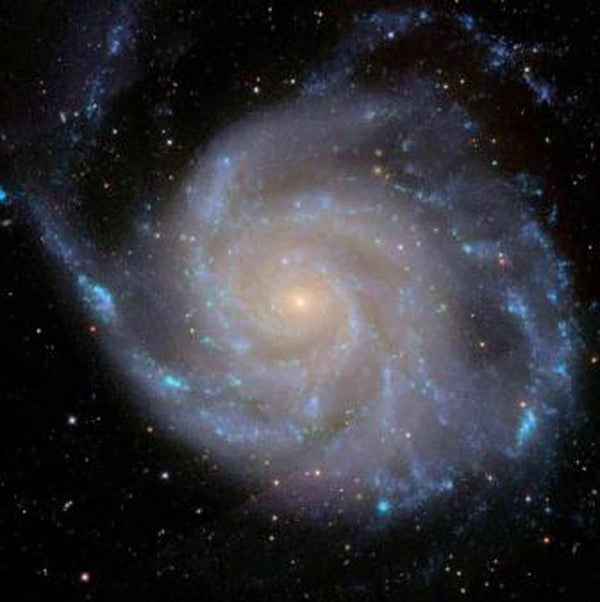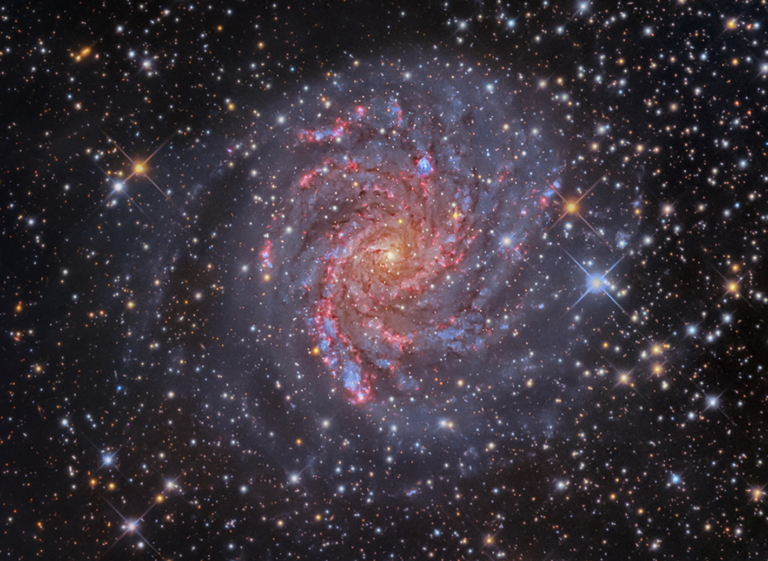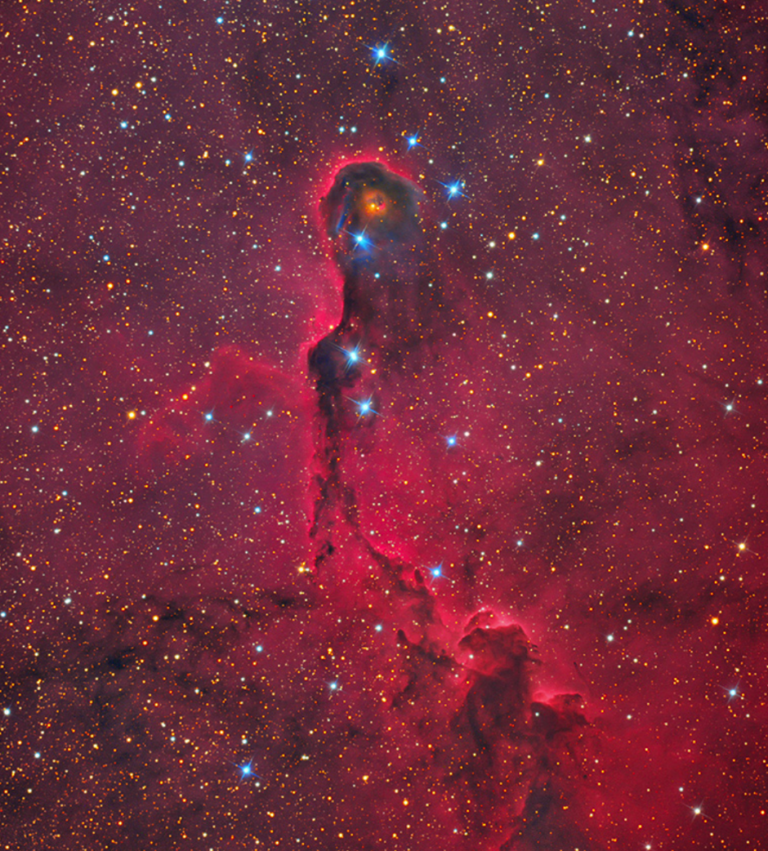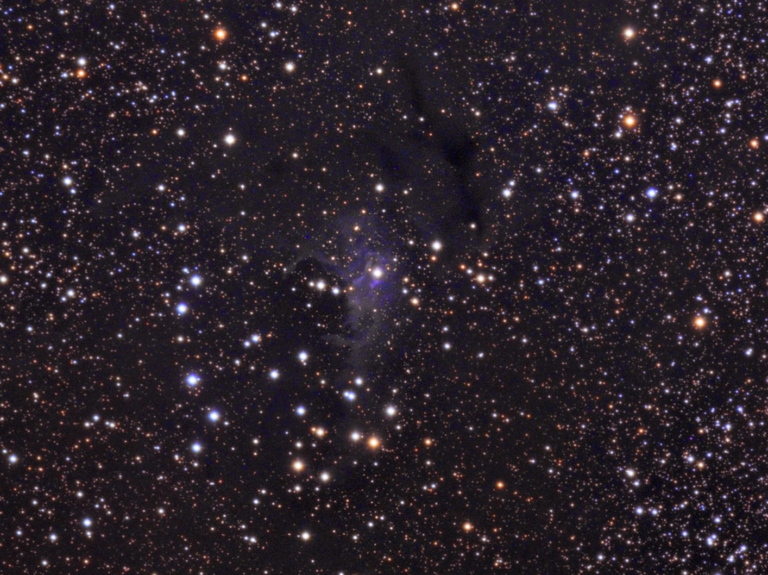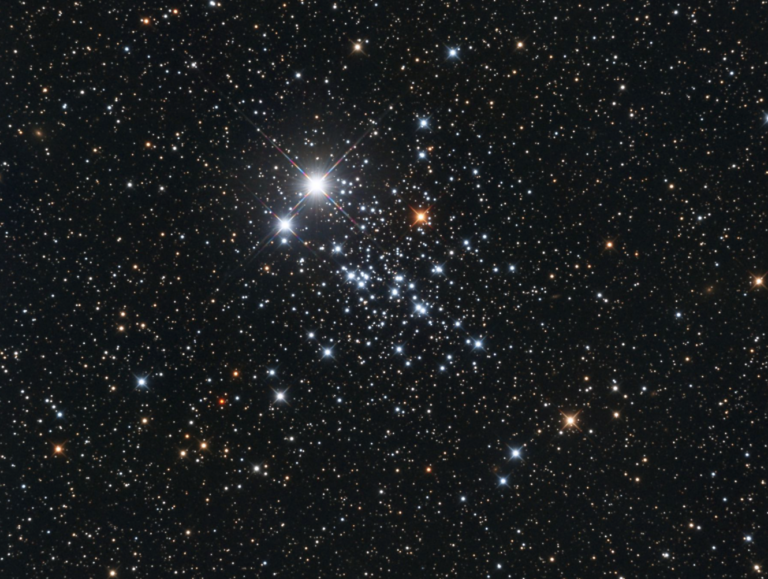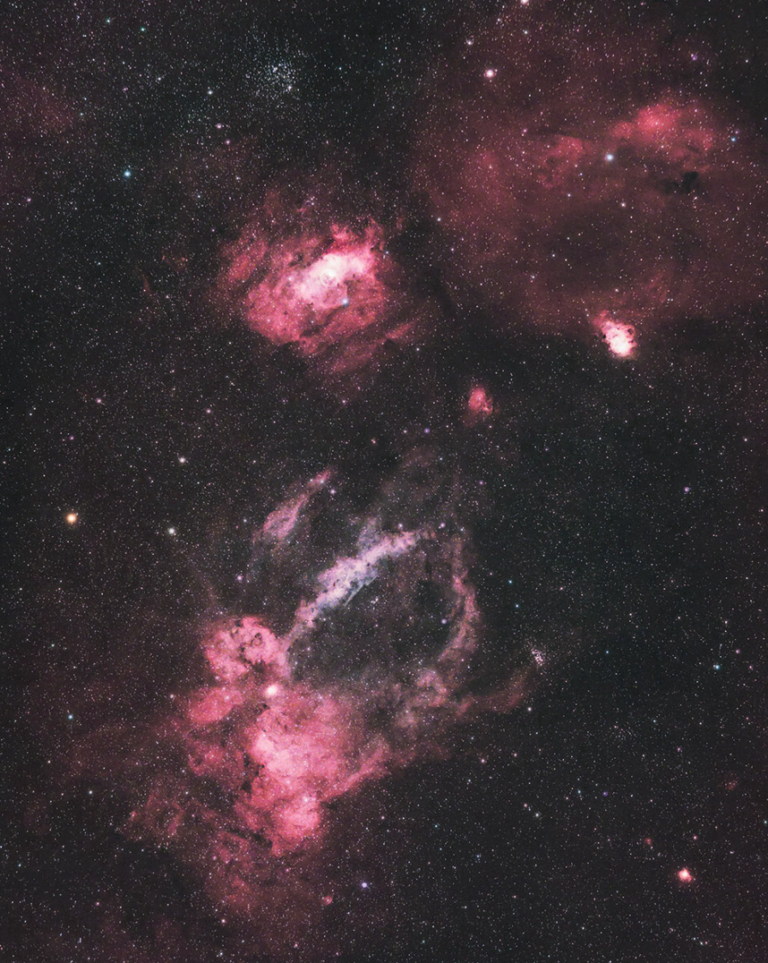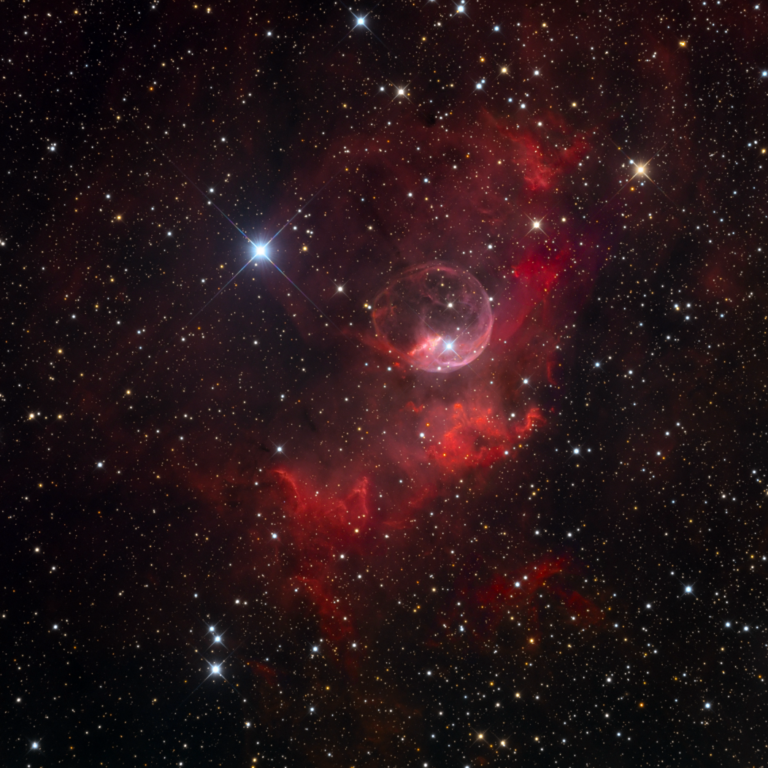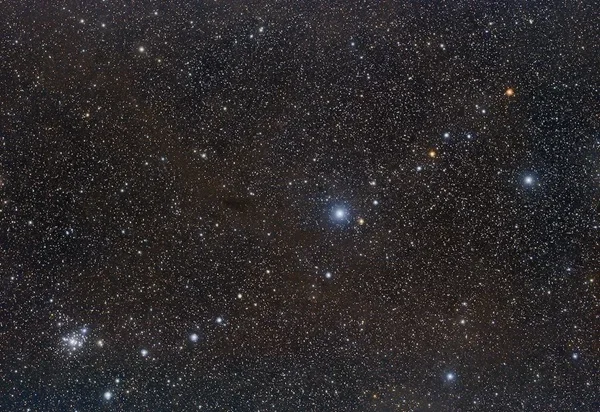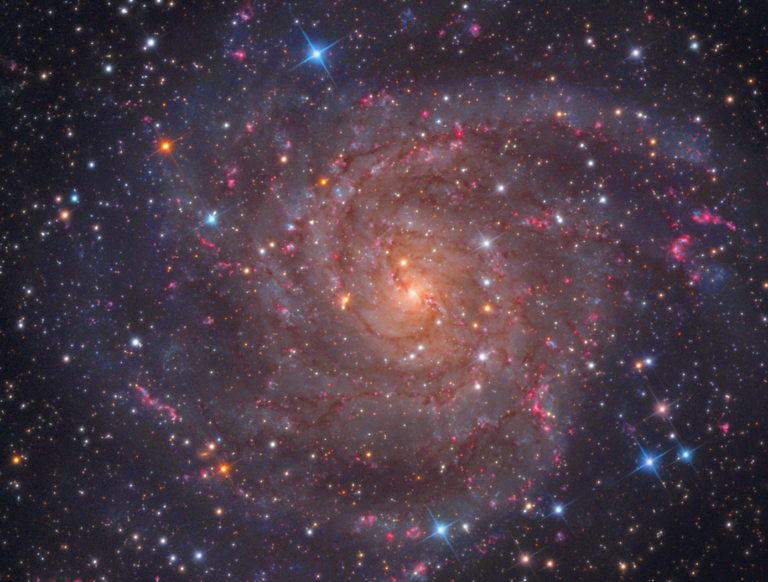While the name Pinwheel Galaxy can refer to M33 in Triangulum and other open spirals, it is the most common moniker for M101 (NGC 5457) in Ursa Major. Located near Alkaid (Eta [η] Ursae Majoris) at the end of the Big Dipper’s handle, M101 can be a wonder or a disappointment, depending on observing conditions. Under ideal dark skies, you can spot M101 in large binoculars, where it forms the apex of an equilateral triangle with Alkaid and Mizar (Zeta [ζ] Ursae Majoris). The core is relatively easy to observe in small scopes, while the dim spiral arms require excellent transparency in dark skies away from urban light pollution. The arms’ asymmetry is readily apparent when they are resolved. With sufficient aperture, you may even see features that correspond to the Milky Way’s Scutum Star Cloud and Carina Nebula (see #67).
M101 was discovered by Charles Messier’s assistant, Pierre Méchain, in 1781. It’s a face-on spiral galaxy whose Sc classification indicates a small central hub and expansive spiral arms. Located some 27 million light-years from us, it’s a big one as spiral galaxies go — 70 percent larger than the Milky Way — and contains an estimated 1 trillion stars.
Despite its mass, M101’s arms are distorted due to interactions with at least a half-dozen companion galaxies, including NGC 5204, NGC 5474, NGC 5477, NGC 5585, UGC 8837, and UGC 9405. In 1990, Paul Hodge and collaborators published an atlas of 1,264 HII regions in M101. Only the largest are visible in amateur telescopes and three have New General Catalogue numbers: NGC 5461, NGC 5462, and NGC 5471.
M101’s magnitude of roughly 7.8 means it should be easy to see in small instruments. However, that is not the case. This open-arm spiral has low surface brightness due to its orientation and expansive size: 29′ by 27′. Our line of sight is perpendicular to M101’s disk, so we observe directly through its galactic plane. If this galaxy’s tilt was instead at a high angle — say, 45° — the starlight would be more concentrated.
Make sure to explore Astronomy’s full list of 101 cosmic objects you must see. New entries will be added each week throughout 2022.
To get the latest astronomical news and observing content delivered directly to your door, subscribe to Astronomy magazine today!

